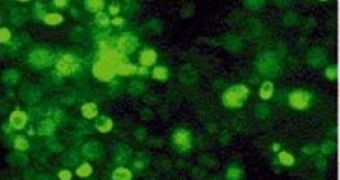When we put together genes from 2-3 species, the results can be astonishing.
But fantasist hybrid mutants like the "Ninja Turtles" would be of no use.
Instead, this method was employed by a team at Temple University School of Medicine, which has made a new biosensor that finds explosives and could be employed for chemical detection of landmines and deadly agents, like the sarin gas.
The team led by Danny Dhanasekaran inserted in a yeast strain the mammalian (rat) olfactory receptors genes and linked them to the expression of green fluorescent protein to create the biosensor. When the olfactory receptor proteins get the smell of DNT, a chemical from the composition of the explosive TNT, the biosensor activates the fluorescent green protein.
It is for the first time when olfactory receptors were identified, cloned and sequenced. "We suspected that harnessing the potential of the olfactory system, which can detect innumerable chemical agents with unparalleled sensitivity and selectivity, would be of immense value in the detection of environmental toxins and chemical warfare agents even at sublethal levels," said Dhanasekaran, Associate Professor of Biochemistry at Temple's Fels Institute for Cancer Research and Molecular Biology.
The researchers are further developing the uses of the biosensor, like its response time, and the potential therapeutic applications could be much more varied. "With further genetic fine-tuning of the olfactory receptor pathway, this system could also be used to screen experimental medications, a crucial step in the development of new drugs," said Dhanasekaran.
Biosensors are much more effective than man-made sensors, which can result costly, cumbersome and rigid. The biosensor yeasts could be designed into a handheld or a remote device that can be located further away and monitored from a distance.

 14 DAY TRIAL //
14 DAY TRIAL //